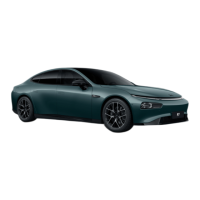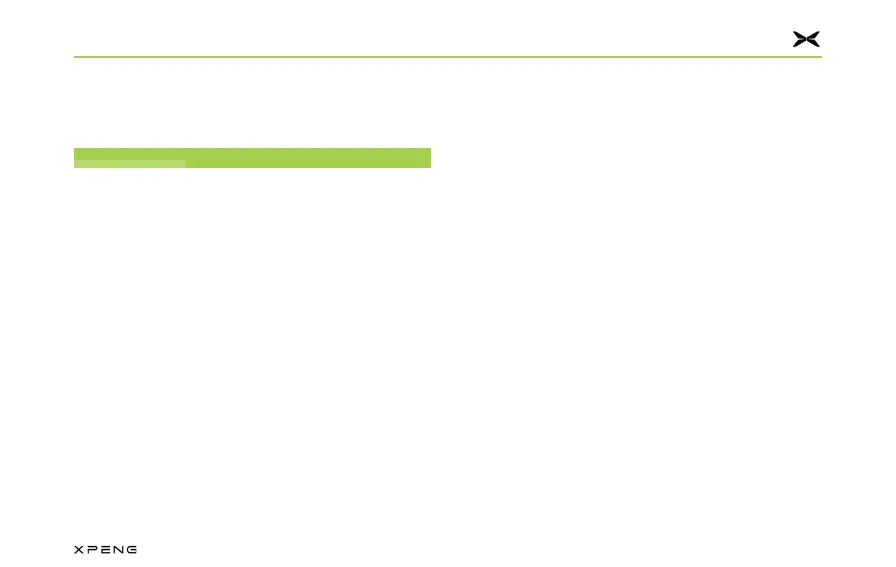Maintenance
240
3. 3. When the vehicle has run at a speed of When the vehicle has run at a speed of
40 Km/h for 10 min, the TPMS calibration 40 Km/h for 10 min, the TPMS calibration
is finished.is finished.
Snow ChainSnow Chain
Snow Chain DescriptionSnow Chain Description
When you drive the vehicle in a severe When you drive the vehicle in a severe
environment such as snowy or icy roads in winter, environment such as snowy or icy roads in winter,
use snow chains to increase tire friction and use snow chains to increase tire friction and
reduce side slip. For the use of snow chains, the reduce side slip. For the use of snow chains, the
following suggestions must be followed:following suggestions must be followed:
─
When driving in deep snow, it is necessary to
install snow chains on the tires. The vehicle is
not equipped with snow chains, and XPENG
owners can purchase ones as needed. To
install snow chains, you must choose an
equivalent of a size and type that matches
the specifications of the tires on your vehicle.
─
Snow chains installed on your tires can
ensure that you can drive in a balanced
manner in all types of weather. It should
be borne in mind that the vehicle may not
have enough traction after installing the
chains. Drive carefully, even when the road
conditions are good. Do not exceed the
speed limit of the tire snow chains, or exceed
50 km/h, whichever is lower.
─
Only use snow chains on the rear wheels.
Install snow chains in pairs. Self-tensioning
snow chains are strictly prohibited.
─
Do not use snow chains on dry ground, and
remove the chains when you drive to a snow-
free road.
─
After installing the snow chains as close as
possible to the tires and driving 0.5-1.0 km,
tighten the chains again.
─
If your vehicle has wheel trim lids, remove
them before installing snow chains.
─
If you hear the friction or collision sound
between the snow chain and the vehicle
while driving, stop and retighten the snow
chain. If it does not work, remove the snow
chains to prevent damage to the vehicle.

